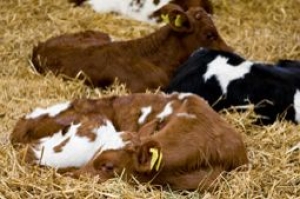How to care for calves
Management, health, and nutrition of the calf can affect age and body weight at calving, first lactation and lifetime milk production

ecently we published the last of a 3-part series of papers in the Journal of Dairy Science where we studied calf nutrition, health, management and other variables to determine their short and long term effects on the animal. The study followed 795 calves from 21 farms in Susquehanna and Wyoming Counties Pennsylvania using standard Statistical Analysis System programming tools. We began by closely following calves as they were born; keeping track of all feed intake, health, housing, and management practices. The calves were initially followed through four months of age, after which we published the first component of the study. Briefly, we found that dry matter intake including milk or milk replacer, grain, and forage consumed during the first four months of age impacted growth rates. In addition, housing after birth, season, and farm had significant effects on the growth of these calves. Calving location, dam parity, and difficulty of birth also had effects on the growth rates of these young calves. Colostrum feeding amount, coccidia levels in the feces, navel dipping as a management practice, and days with respiratory illness entered the model and while important, were not in the final significant model.
Next we looked at these same calf factors that were affecting age at first calving. We found that a calf with a difficult birth had an older age when they calved. Since calving difficulty has been previously shown to reduce colostrum IgG absorption, this is quite logical. In addition, calf housing variables including the temperature and humidity levels in the calf housing area increased age at calving. These items were related to calf health, primarily respiratory disease. Nutrition factors including the amount of milk fed and low quality forage also increased age at calving. Number of days treated for respiratory illness also increased age at calving. Body weight at first calving was affected by several housing variables that can affect respiratory health, factors related to grain intake which can impact rumen development, and finally the parity of the dam of the calf. Dam parity also has been previously shown to affect the growth of a heifer since older dams often have larger heifers.
The final paper in the series, published in the Journal of Dairy Science this year, looked at these calf factors that eventually affected milk production. Weaning dry matter intake (milk or milk replacer, grain and forage), days treated for respiratory illness, and body weight at first calving all had significant positive effects on first lactation 305 ME milk production (milk and/or fat and protein amounts). Age at weaning, difficult births, days ill, and in a small degree age at first calving, all had negative effects on first lactation production. The study also looked at lifetime production and found similar effects, though less significant than for first lactation.
So to summarize, dry matter intake coming from milk or milk replacer as well as that coming from grain and forage affected the growth of the young calf. In addition, variables related to the health of the calf including housing quality, colostrum, parasite infection levels, and respiratory illness affected the growth of the young calf. Age at calving was affected by several calf health/housing variables and dry matter intake of various feedstuffs. Finally and most important, calf variables including difficult births and number of days ill had negative effects on milk production; while body weight at calving, weaning dry matter intake and number of days treated all had positive effects on the production of these dairy cows.
The two most important aspects to pay close attention to related to calf rearing that impacts future milk production are: 1) calf health, especially respiratory health, and 2) total dry matter intake around the time of weaning including milk and milk replacer and grain.






















